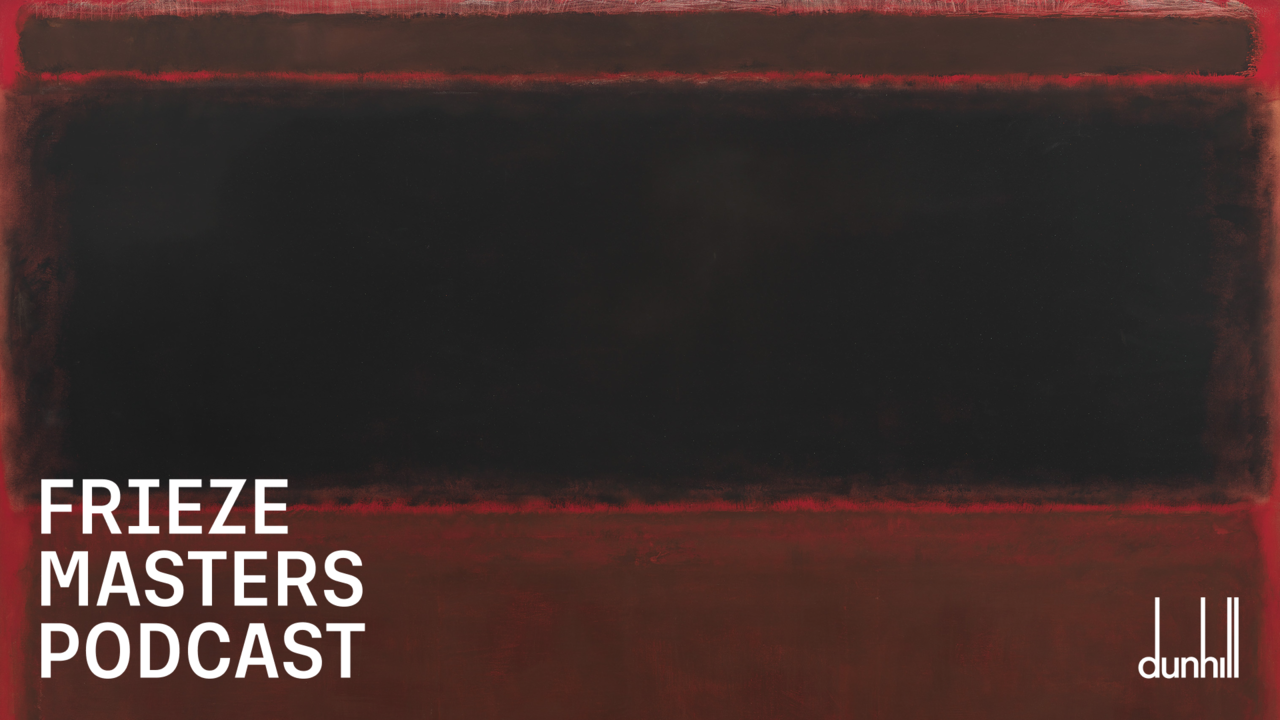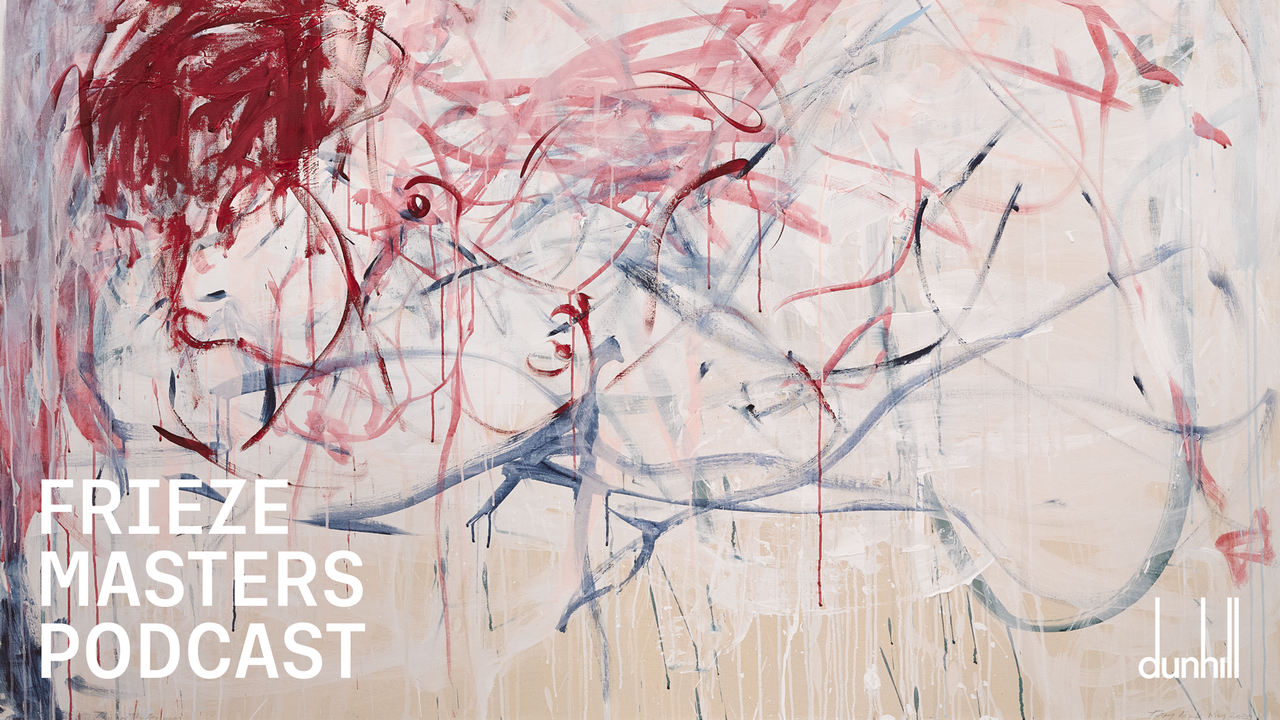World’s Oldest Known Drawing Discovered in South African Cave
In further news: Brazilians crowdsource images of artefacts lost in museum fire; Jan Fabre accused of sexual harassment
In further news: Brazilians crowdsource images of artefacts lost in museum fire; Jan Fabre accused of sexual harassment

The world’s oldest known drawing has been discovered in a cave in South Africa, according to archaeologists. The stone flake is thought to be around 73,000 years old. ‘This notable discovery predates the earliest previously-known abstract and figurative drawings by at least 30,000 years’ a new study says. The image consists of cross-hatch lines deliberately applied with red ochre pigment. The drawing comes from Blombos Cave, 300km east of Cape Town – discovered while researchers were cleaning artefacts excavated from the Middle Stone Age archaeological site in 2011. Their findings, published in the journal Nature, provide an insight into humans’s earliest uses of symbolism. Archaeologist Christopher Henshilwood, who led research efforts, said ‘I can’t say it’s art’, but ‘there’s no doubt that it’s a symbol that meant something to the people who made it.’
Secret plans for a roof bar at London’s Royal Festival Hall have been criticized. The plan to install a large-scale bar and restaurant on the roof of the Royal Festival Hall, on the banks of the Thames, has been deemed insensitive and harmful by the conservation group Twentieth Century Society. As reported in the Guardian, the Southbank Centre and commercial partner, Incipio Group have applied for permission to build a 686-square-metre transparent pavilion on the roof which will stay open until 2am on weekends. Twentieth Century Society caseworker Grace Etherington said the development would obscure the signage of the Grade I-listed building, adding: ‘This is not the right location for an off-the-peg design.’ Historic England has also voiced objections to the plans. The roof space would transition from a bar and restaurant into an open-air performance space after three years.
German authorities have confirmed that Cornelius Gurlitt’s sister also concealed Nazi-looted art. Like her brother, Benita Renate Gurlitt inherited Nazi-looted artworks from her father, art dealer for the Nazis Hildebrand Gurlitt – a fact that came to light after four works that Renate had owned were brought in by an unnamed art collector to be reviewed by the German Lost Art Foundation. The collector has decided to return them to the heirs of their former Jewish owners. The looted works include two drawings by Charles-Dominique-Joseph Eisen, Portrait of a lady in profile by Augustin de Saint-Aubin, and a self-portrait by Anne Vallayer-Coster – they were all the property of the Jewish Deutsch de la Meurthe family in Paris before being seized under the Nazi occupation.
Brazilians are crowdsourcing images of works lost in the devastating blaze that recently engulfed the country’s National Museum. The fire is thought to have destroyed 90 percent of the museum’s collection of anthropological and historical artefacts, from Egyptian mummies to the oldest human skeleton discovered in the Americas. Luana Santos and fellow museum studies students in Rio de Janeiro released an open call for photos and videos of missing items, as well as selfies taken by visitors. Within hours of their appeal, they received 14,000 replies which included videos, photos and drawings. Discussing the overwhelming response, Santos said that it showed ‘the importance of the archive – not just a place of research and history, but as part of people’s lives’.
A US federal appeals court has rejected a claim to a Matisse owned by London’s National Gallery. Three grandchildren of the muse portrayed in the work put forward the case that the painting Portrait of Greta Moll (1908), acquired by the National Gallery in 1979, was illegally sold by a former art student who had been entrusted with it in the aftermath of the Second World War. The ruling on Monday (10 September) saw the appeals panel in New York confirm that the National Gallery and Britain were immune from the jurisdiction of US courts as the lawsuit did not meet conditions set by the Foreign Sovereign Immunities Act. ‘The alleged taking of the painting was committed by a private actor’ not ‘a sovereign’, the judges said. In a statement, the gallery said that it bought the portrait ‘in good faith’ and that the case did not concern Nazi-looted art, according to The Art Newspaper.
Belgian choreographer Jan Fabre has been accused of sexual harassment. Fabre faces accusations from 20 dancers who allege years of humiliation and sexual intimidation. In a letter published in Dutch art magazine rekto:verso, Fabre’s former employees described working in a ‘toxic environment’ in which ‘humiliation was our daily bread.’ Incidents included ‘semi-secret’ photographic sessions where dancers were offered money and urged to take drugs to ‘feel more free’. Those who refused to participate saw their roles restricted, according to the letter. Eight signatories provided their names, with the other 12 choosing to remain anonymous. Fabre and his Troubleyn company have denied the claims, saying: ‘We deplore this attack through the media, because this is an unfair public trial.’
And in awards news: Brussels-based duo LarbitsSisters win the NOVA New Media Interactive Art Prize, awarded by the Beijing Contemporary Art Foundation and the Big House Contemporary Art Center in Wuhan – the USD$16,000 award recognizes artists engaging with ‘future-oriented technologies’; Irish artist Kathy Prendergast has been named the inaugural recipient of the David and Yuko Juda Foundation Prize which comes with a GBP£50,000 award; London’s Design Museum has announced 87 nominees for the 2018 Beazley Designs of the Year – they include Ruth E Carter’s costumes for the film Black Panther and Jean Nouvel’s Louvre Abu Dhabi.




















